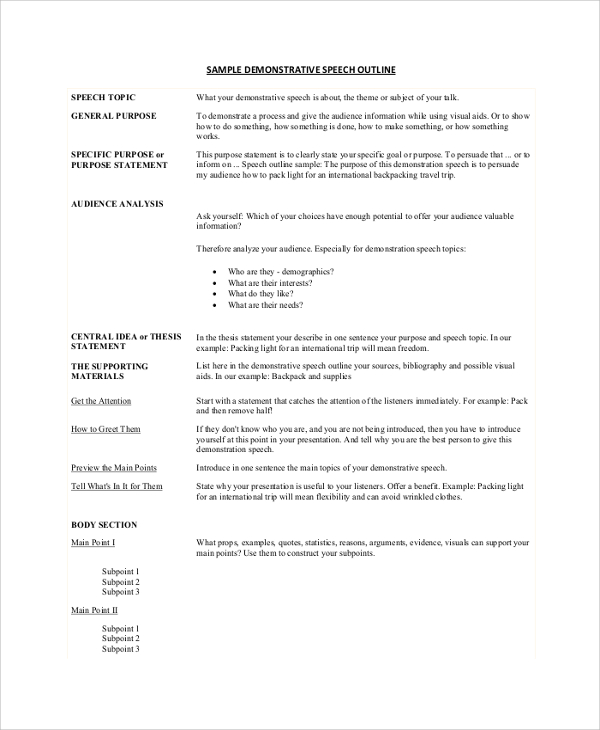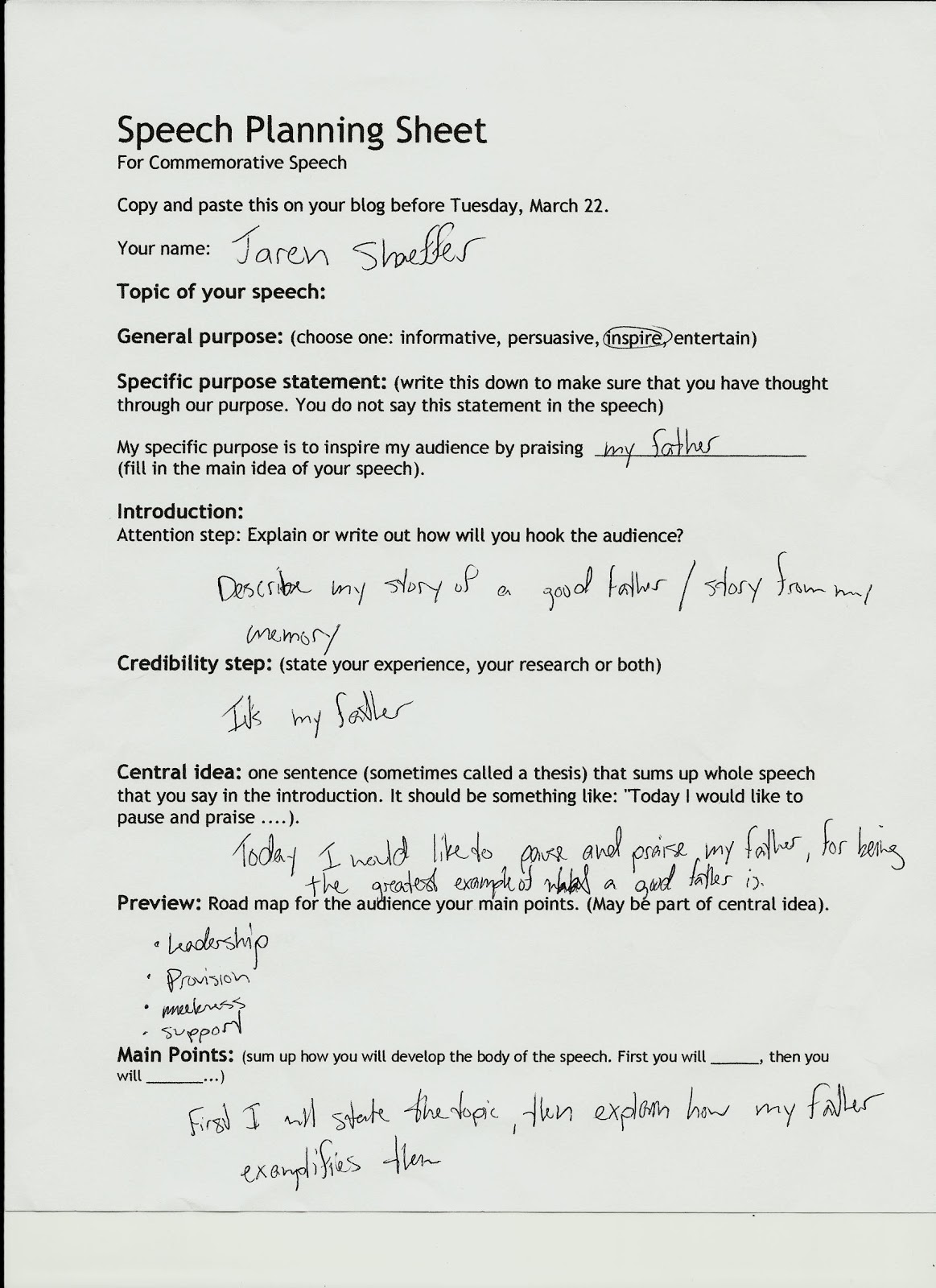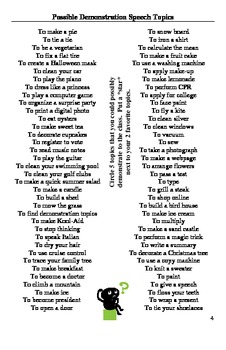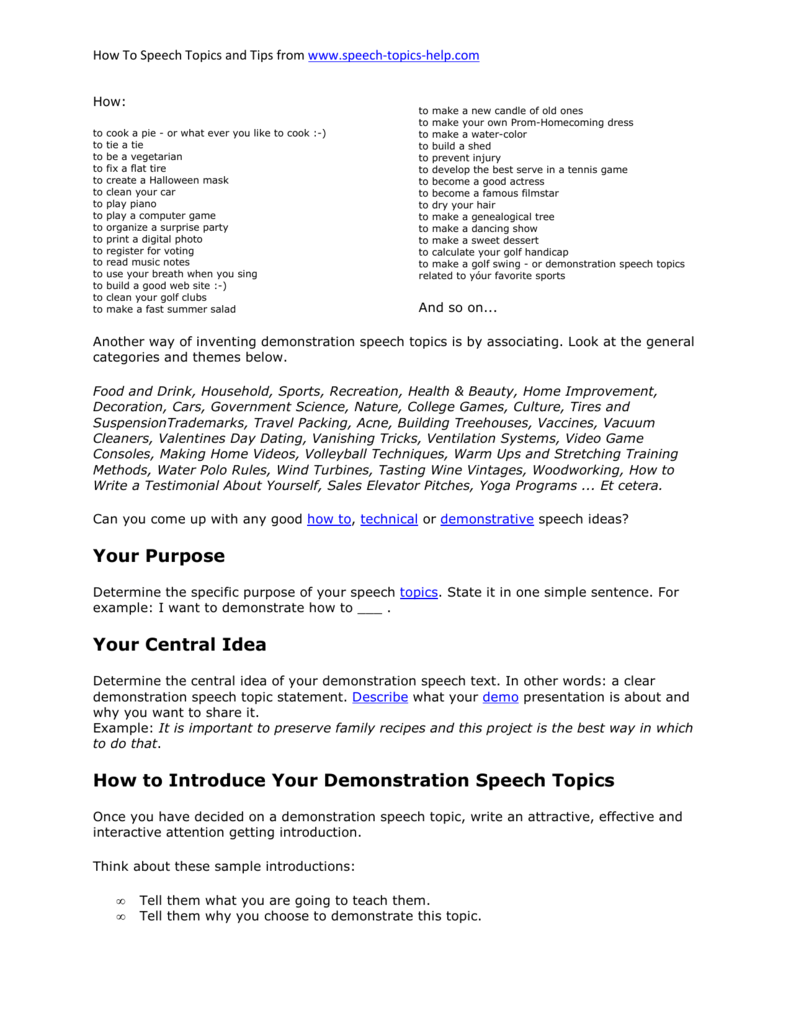


So if your first speech is an informative speech, your general purpose will be to inform your audience about a very specific realm of knowledge. A specific purpose statement builds on your general purpose (to inform) and makes it more specific (as the name suggests). Now that you know your general purpose (to inform, to persuade, or to entertain), you can start to move in the direction of the specific purpose. Perhaps you could think of them as appealing to the understanding of the audience (informative), the will or action (persuasive), and the emotion or pleasure. These broad goals are commonly known as a speech’s general purpose, since, in general, you are trying to inform, persuade, or entertain your audience without regard to specifically what the topic will be. Speeches have traditionally been seen to have one of three broad purposes: to inform, to persuade, and - well, to be honest, different words are used for the third kind of speech purpose: to inspire, to amuse, to please, or to entertain. Even though you write the introduction last, it is always the beginning of the speech.Chapter 5: Presentation Organization 32 Purpose and Central Idea Statements.For example, you might say something like, "How many people in this room does it take to change a lightbulb? I don't know, but I do know that after this speech, it'll only take one to change a tire," or, "My grandmother actually won my grandfather's heart by baking him croissants that were tastier than his own French mother's!" Engaging introductions might include a joke, a funny story from your life, a rhetorical question, or an amazing fact.To get people excited, use inspiring language such as, "You may have never thought you'd be able to change a flat tire yourself, but actually, it's remarkably simple!" or, "French pastries are one of the treasures of European cuisine.".By now, you know everything you want to say about the speech, so you can determine what is most essential to get people excited about it. Writing the introduction last is a good idea, because then you'll have already thought hard about your speech.The introduction should get people excited about your topic and tell them what they can expect to learn. Now that you've written most of your speech, you can go back and write the introduction. Will you include audience participation? Will the demonstration be hands-on? Will you tell jokes or ask the audience questions? These can all be great strategies for keeping people engaged. To keep the audience engaged, think of how you can involve them.

Turn the screw enough to loosen the blade.

For example, it might not be enough to say, "Remove the saw blade." You might need to break that step up, so that you have smaller steps such as: Consider which steps need to be broken down into smaller steps.What steps required more explanation than others?
Demonstrative speech central idea how to#


 0 kommentar(er)
0 kommentar(er)
